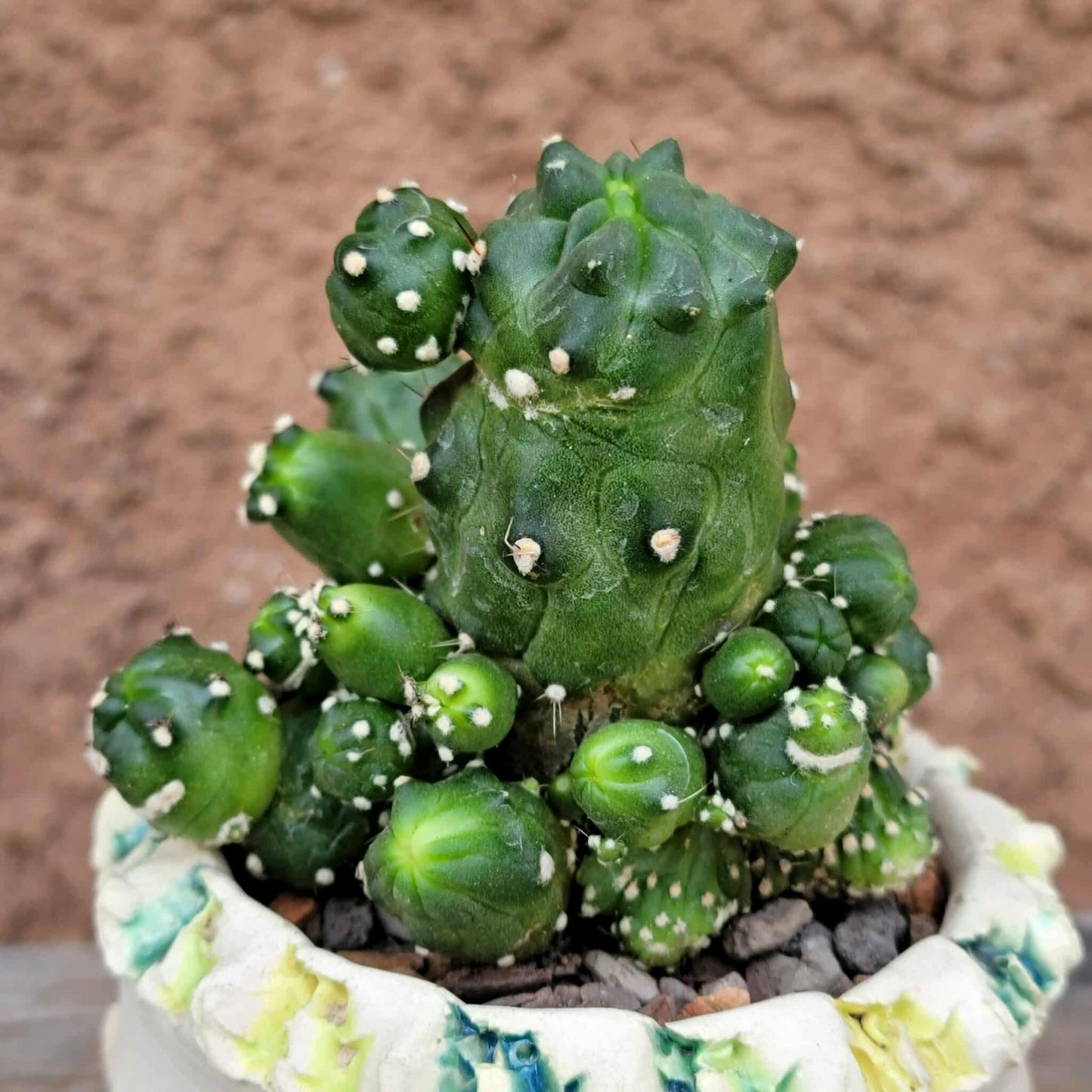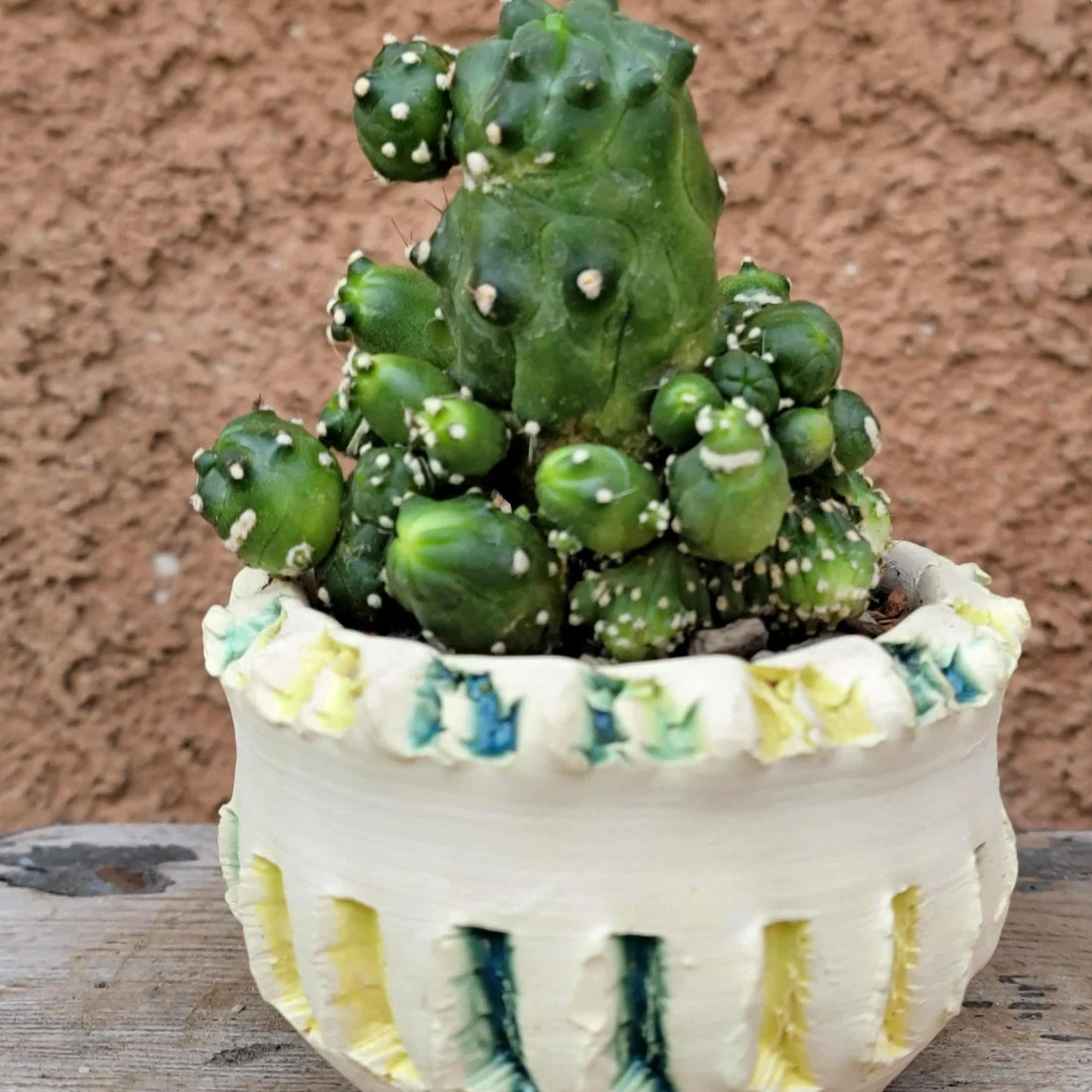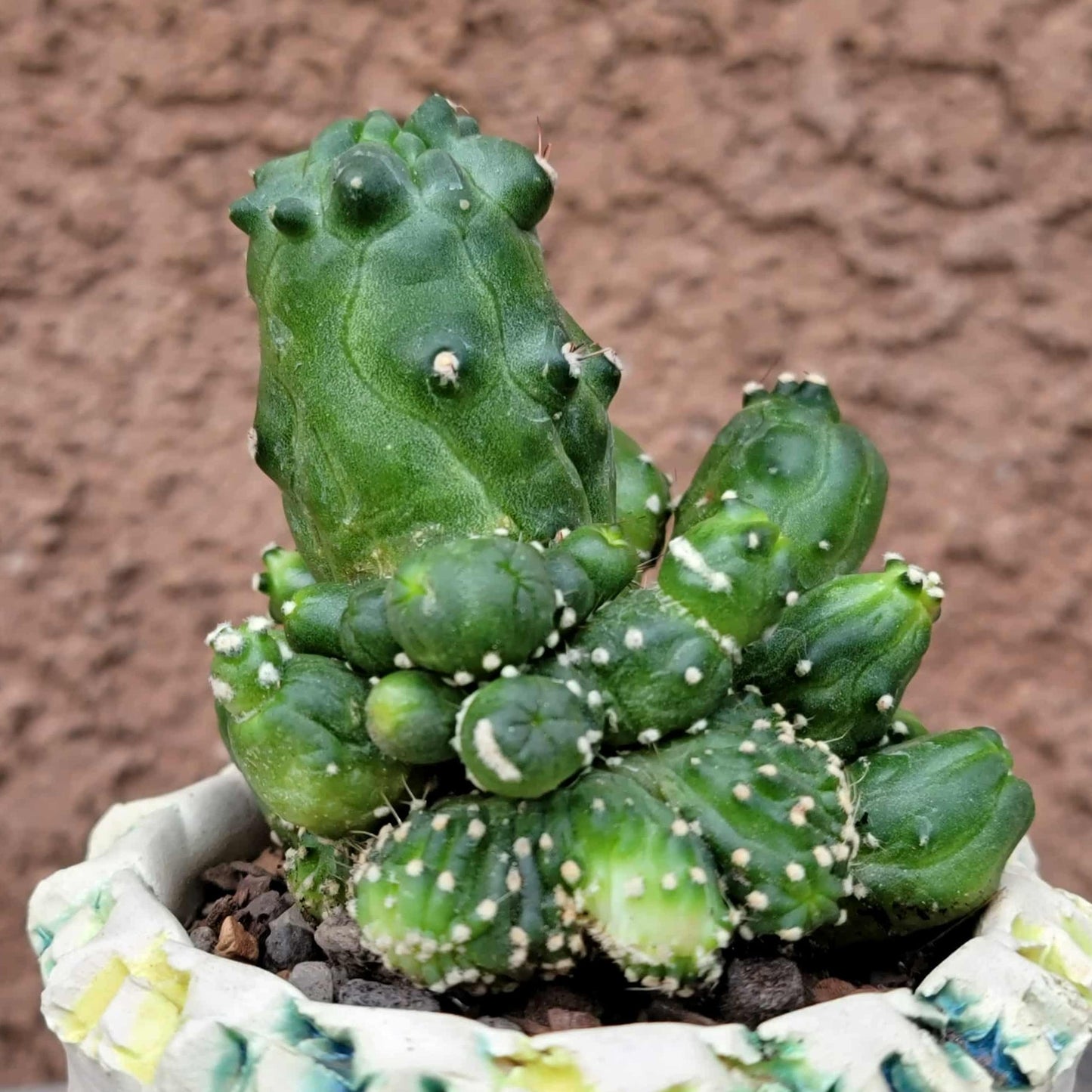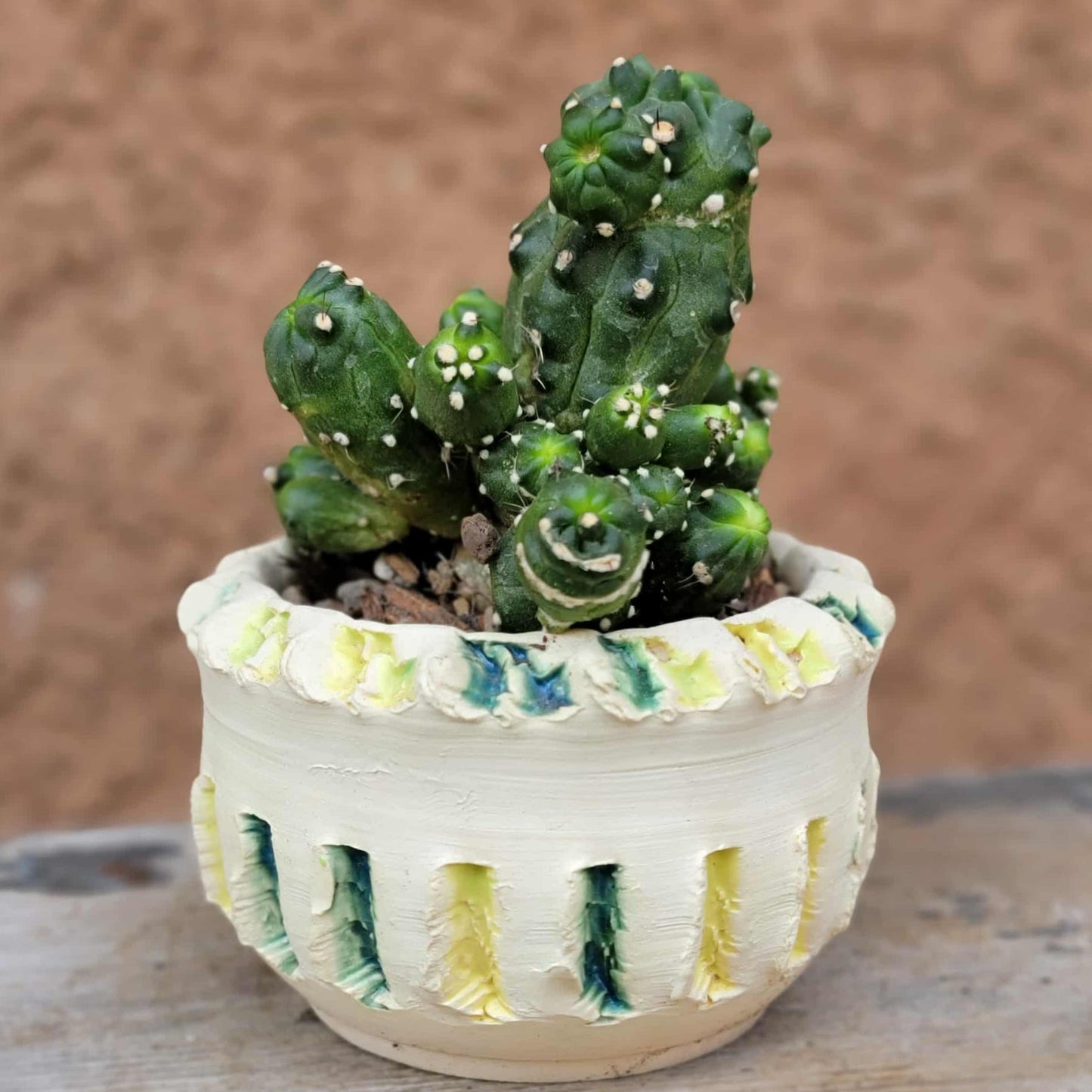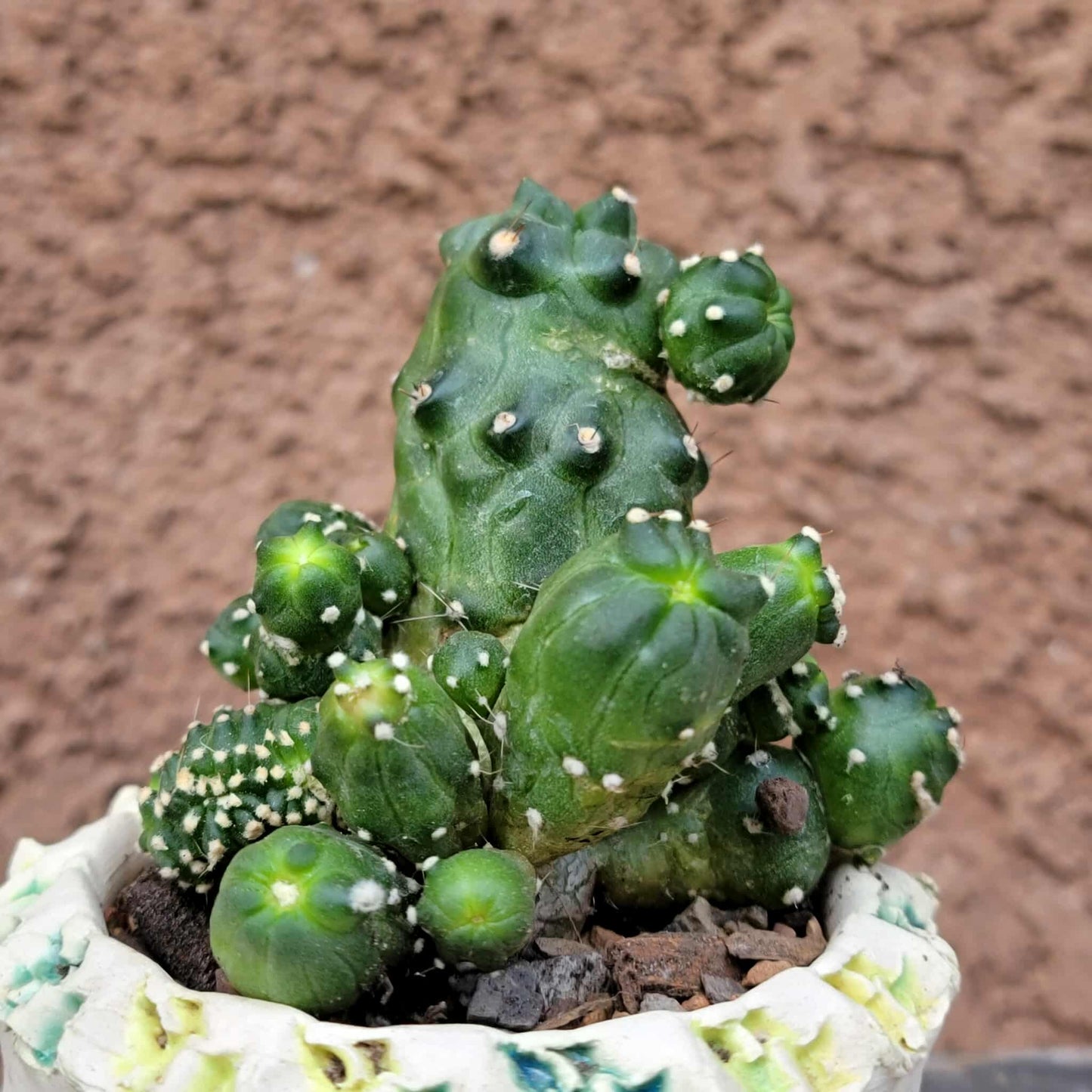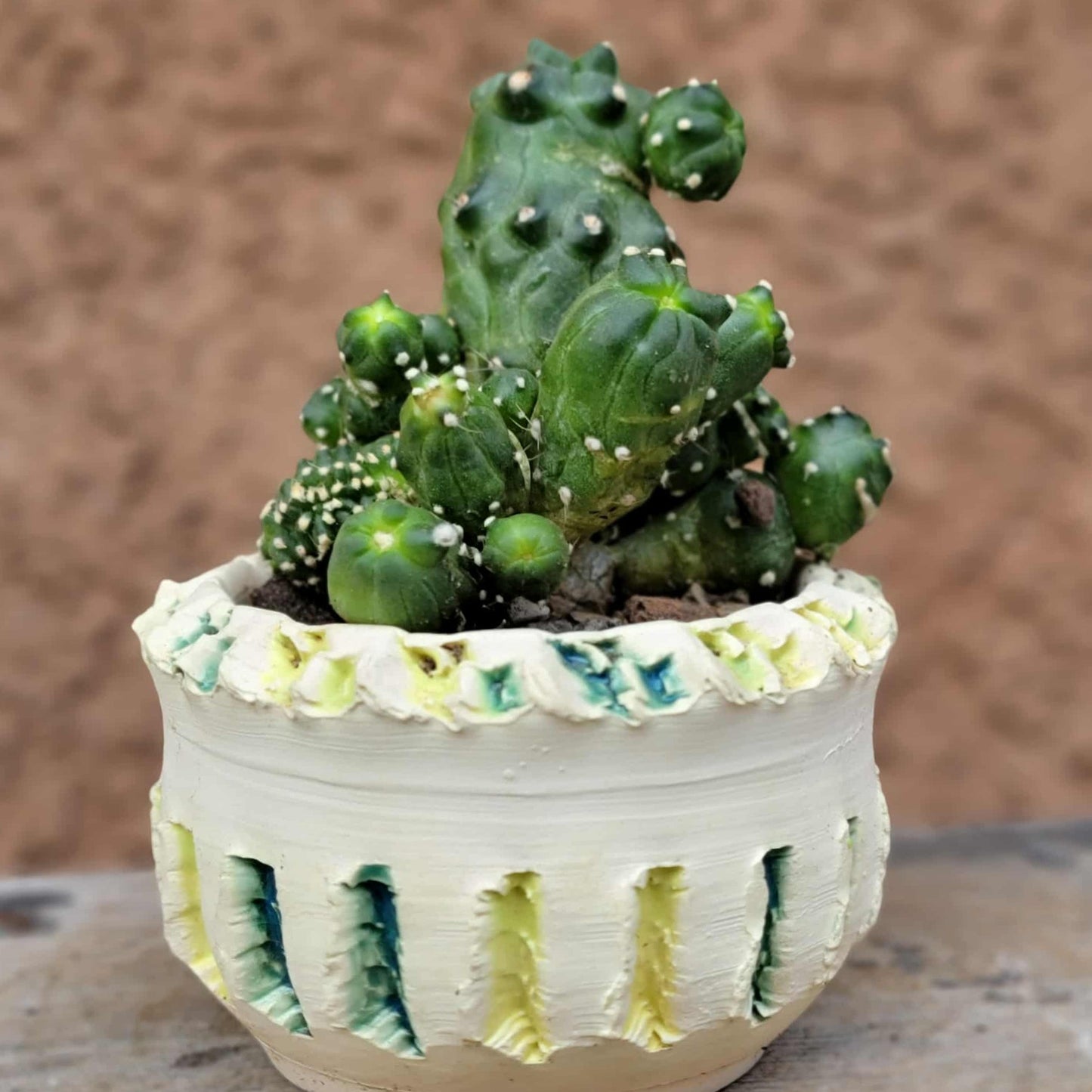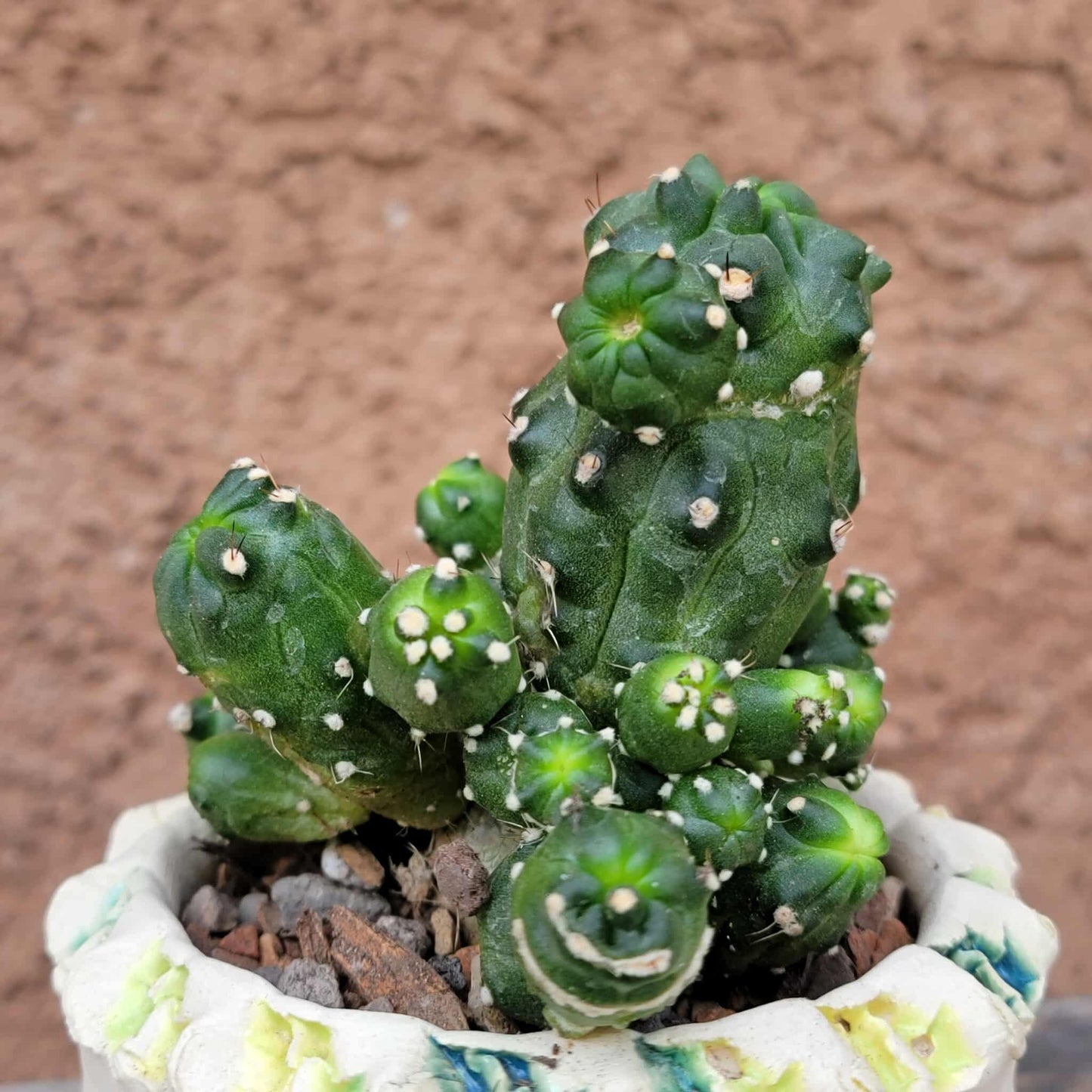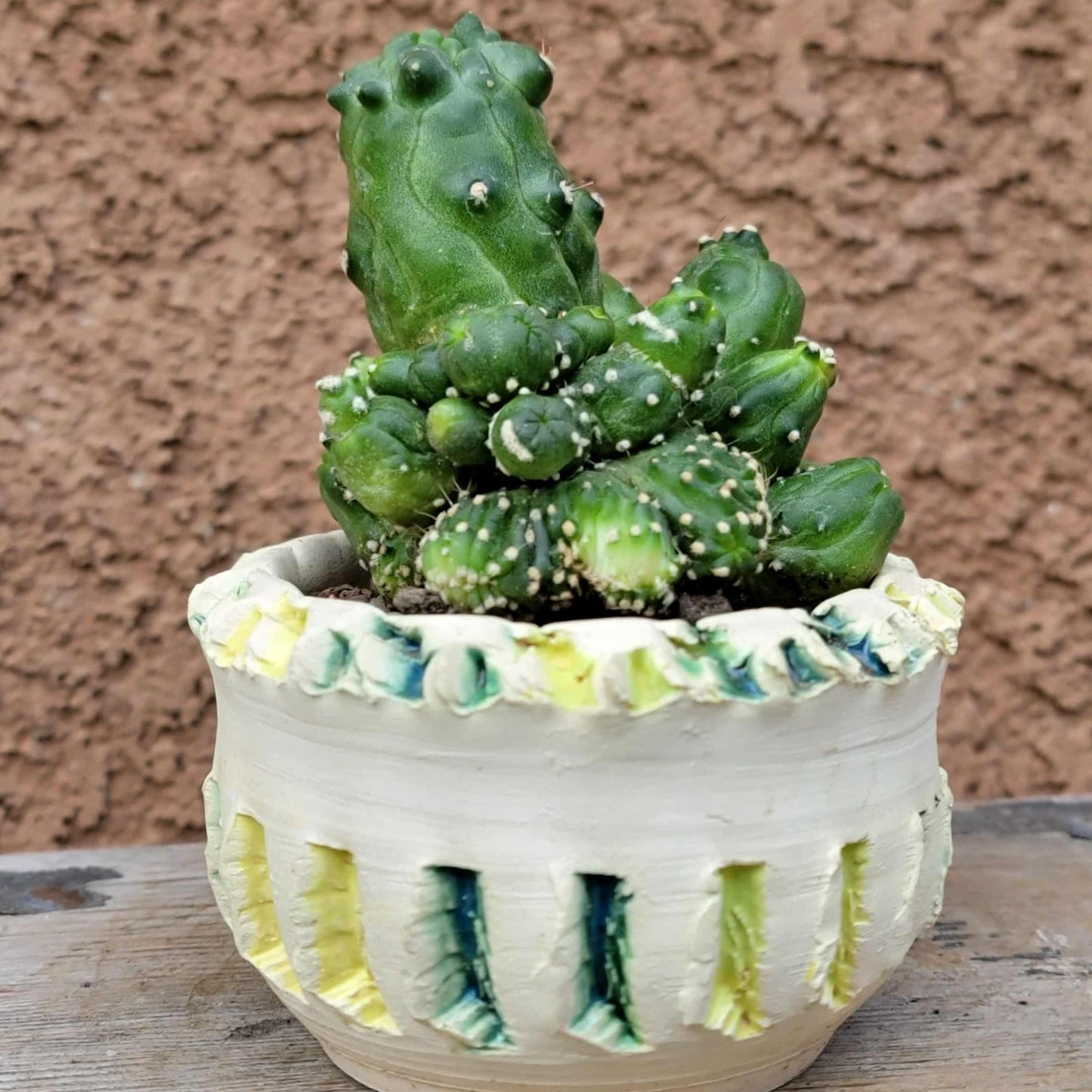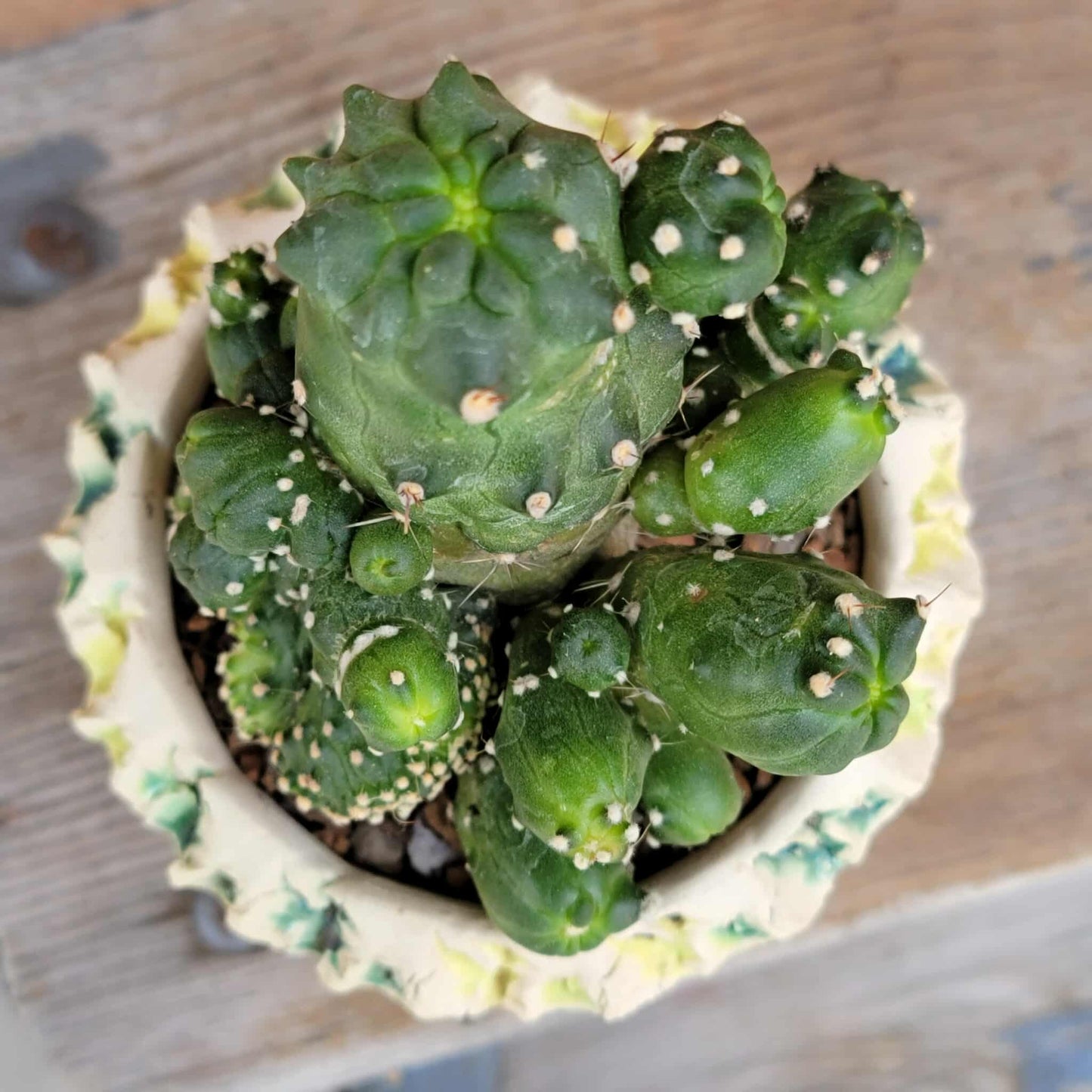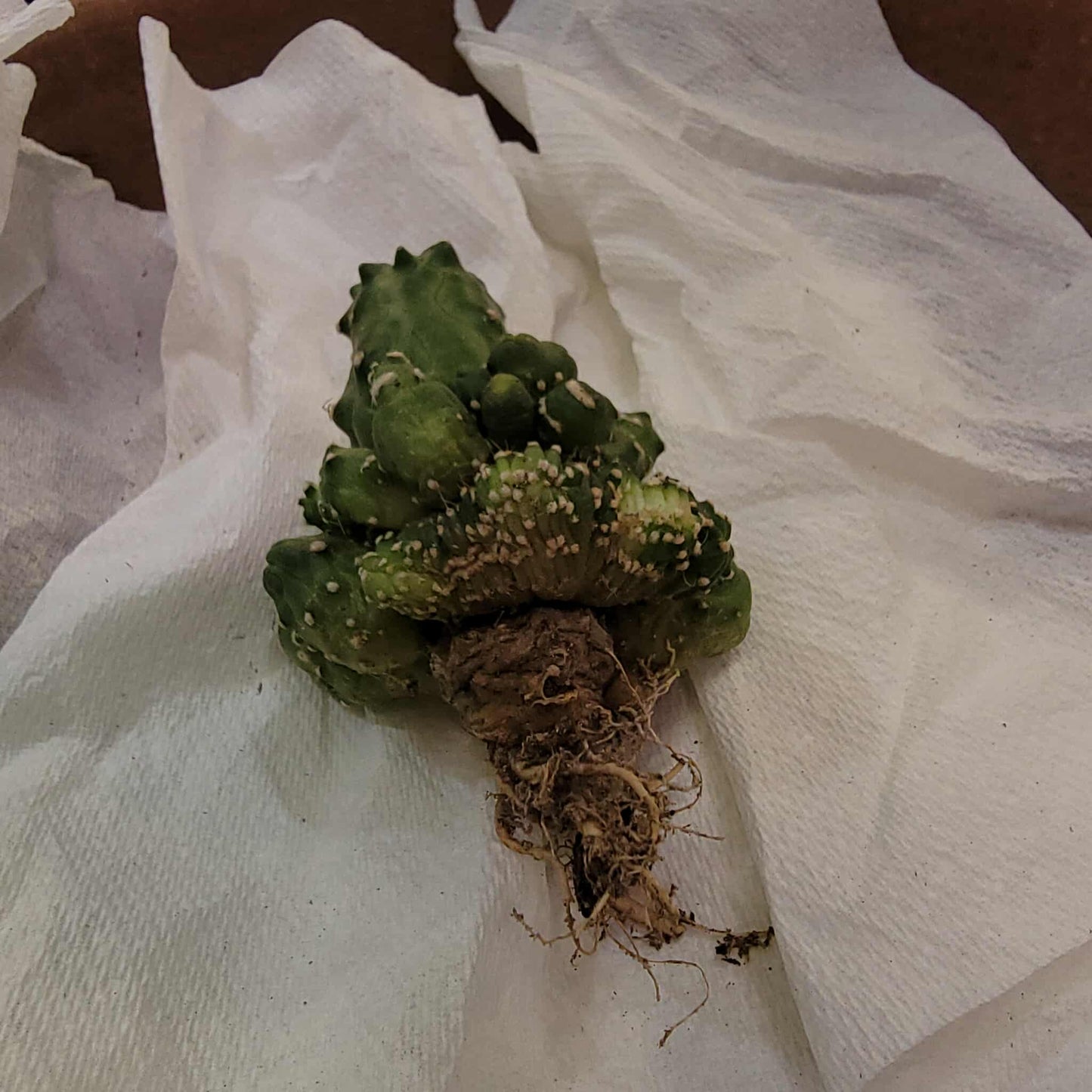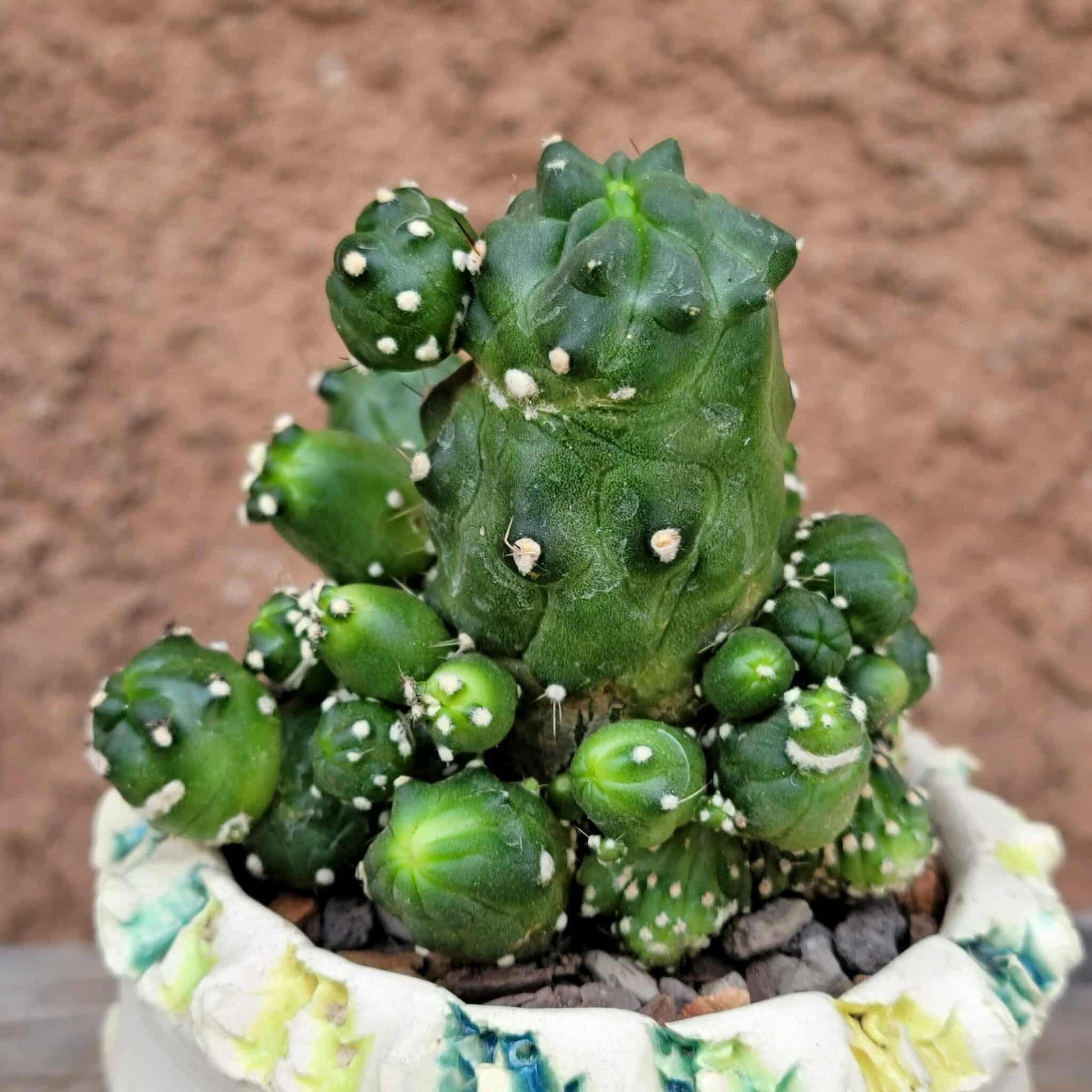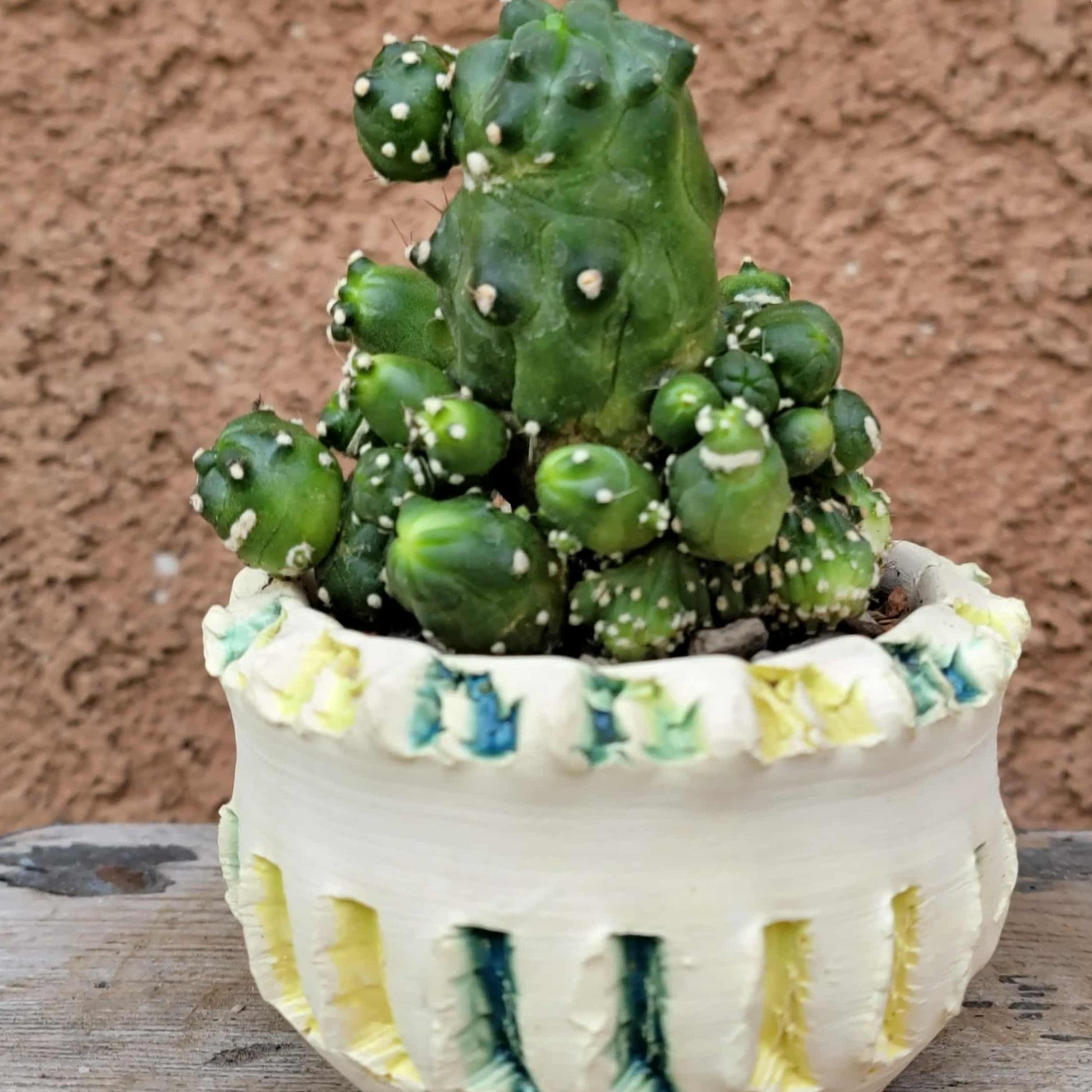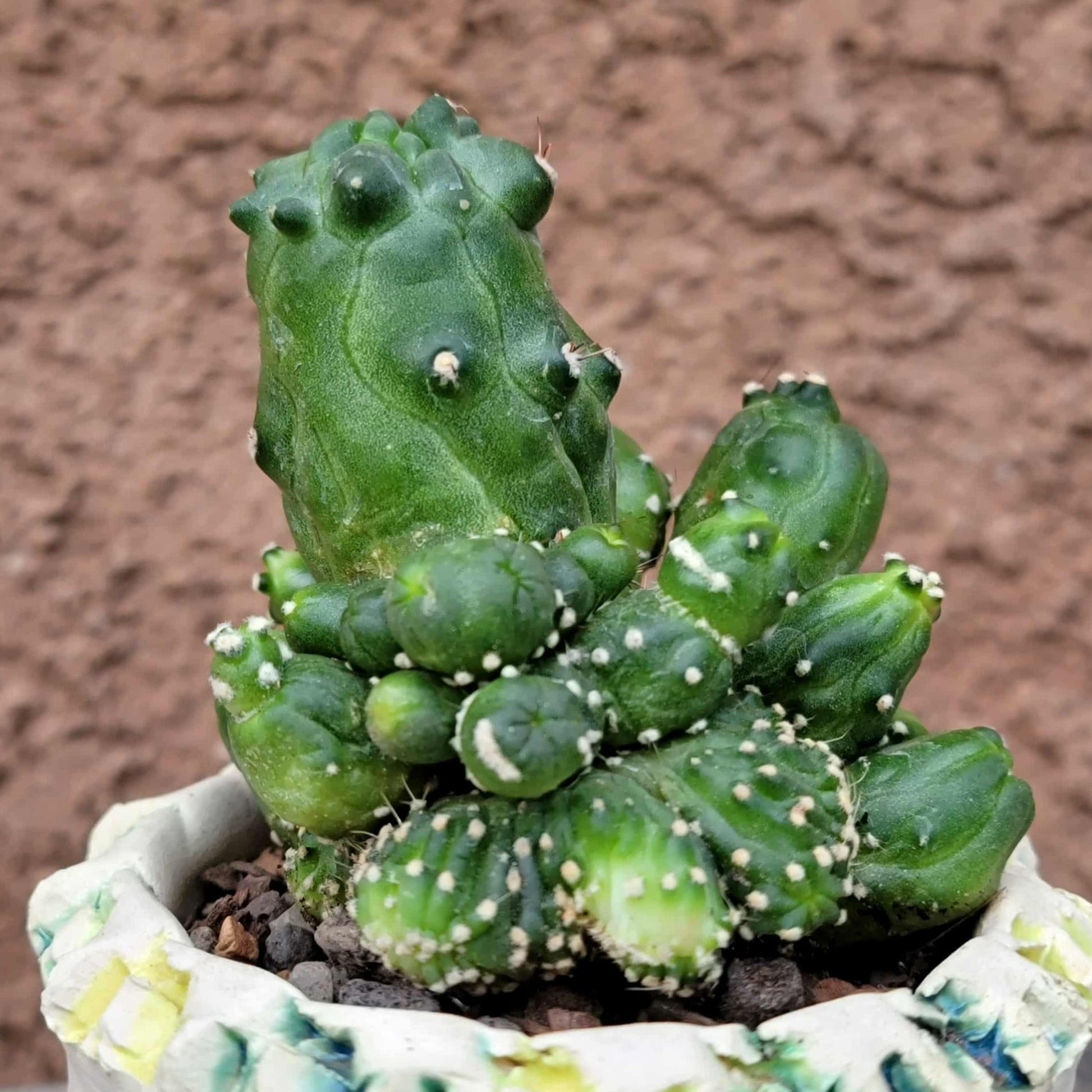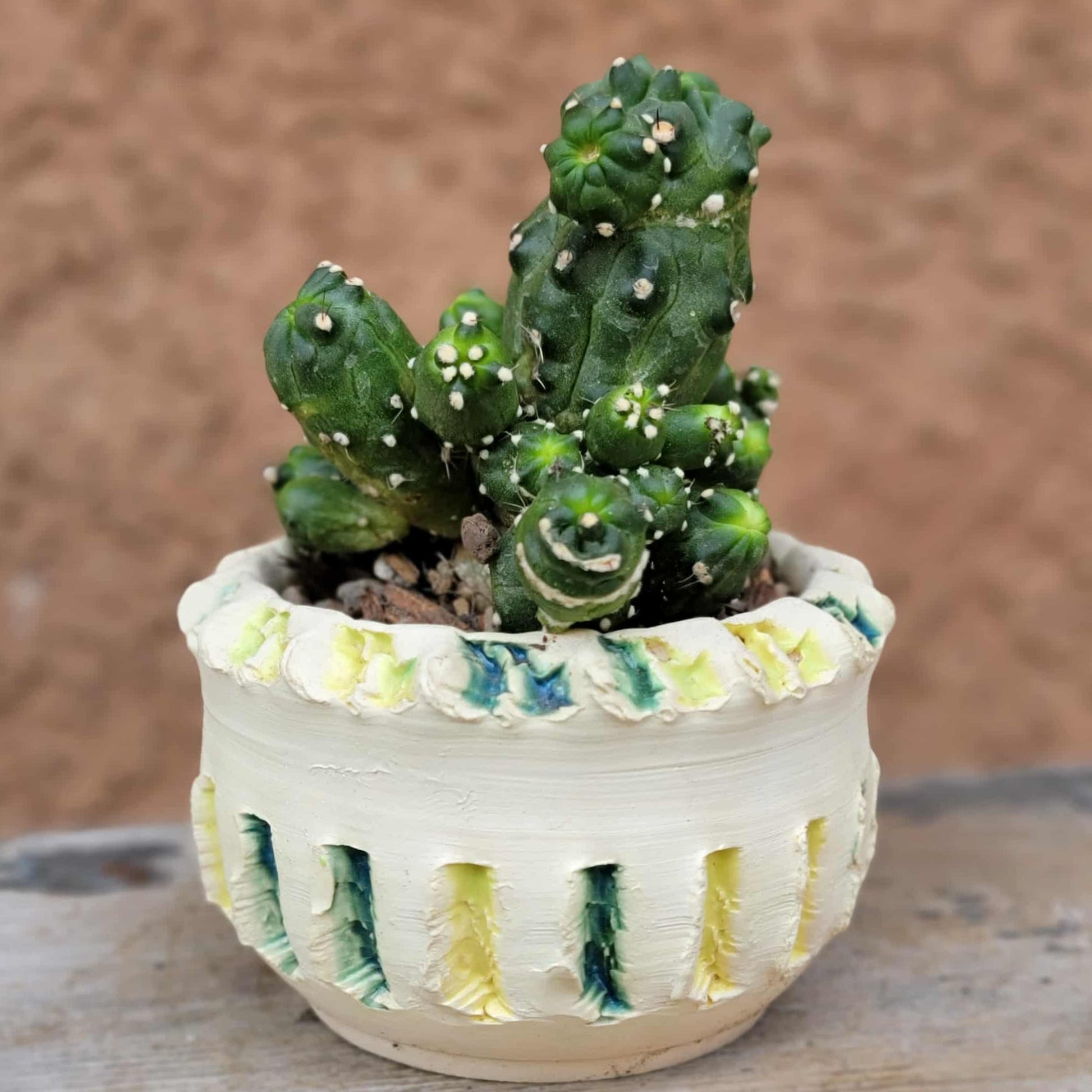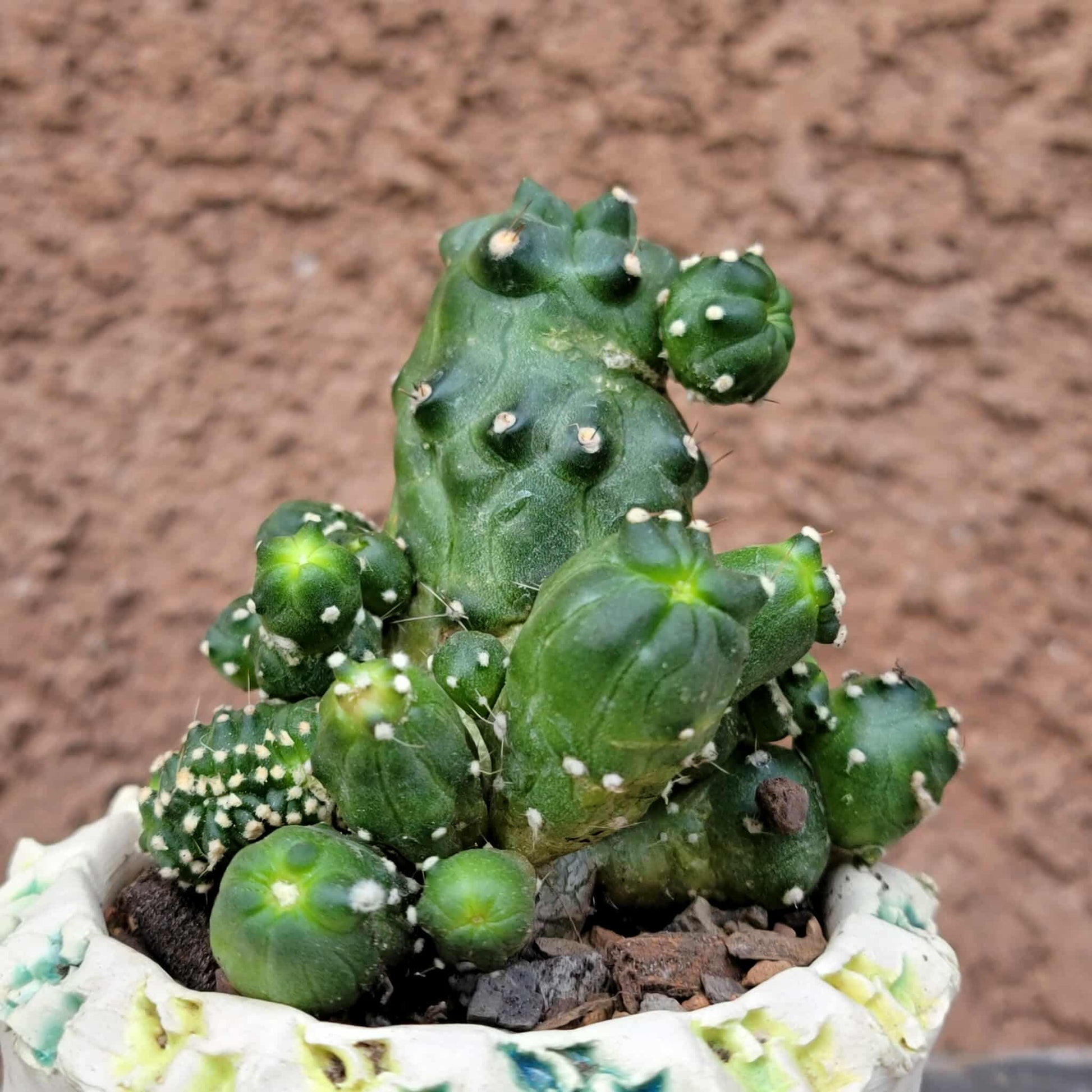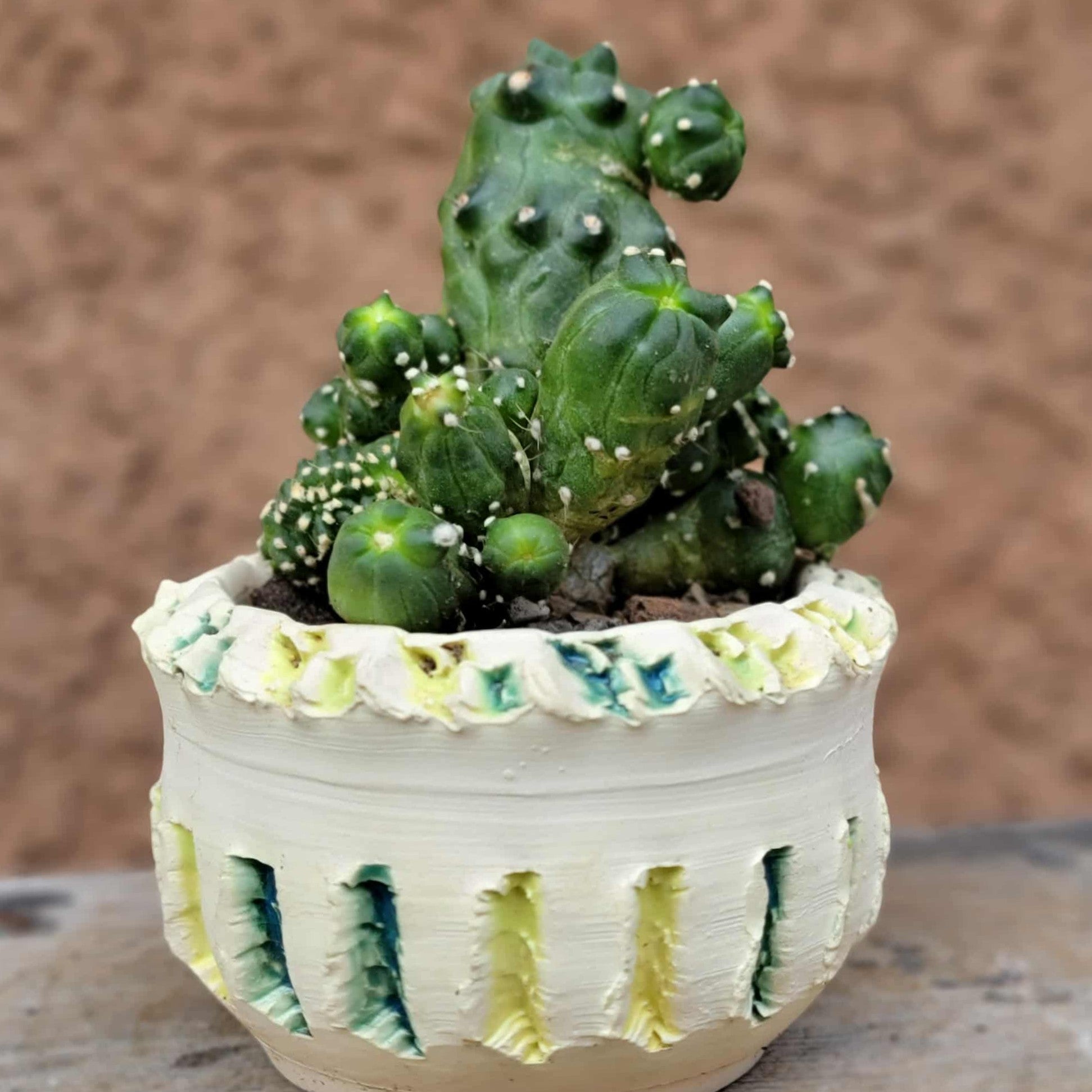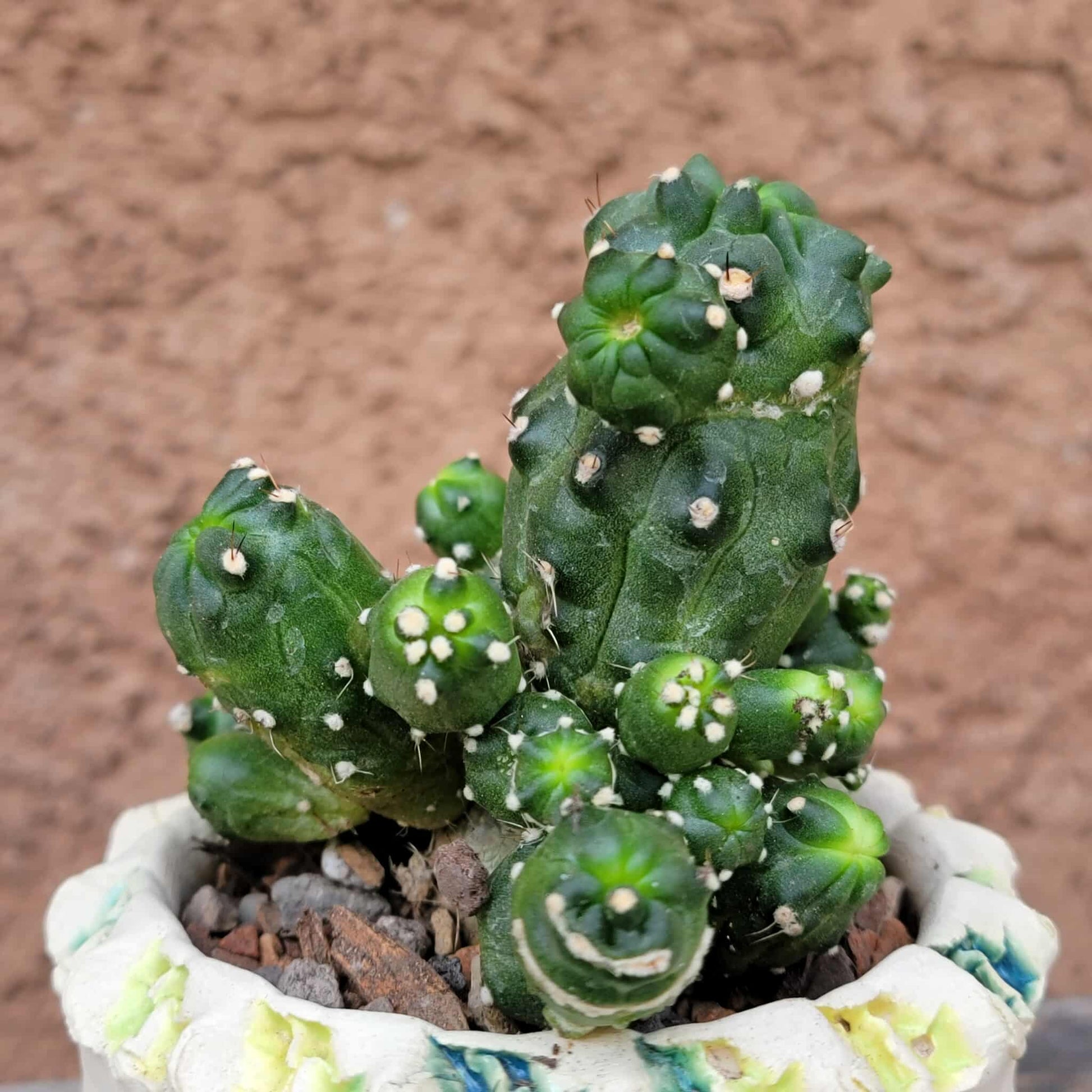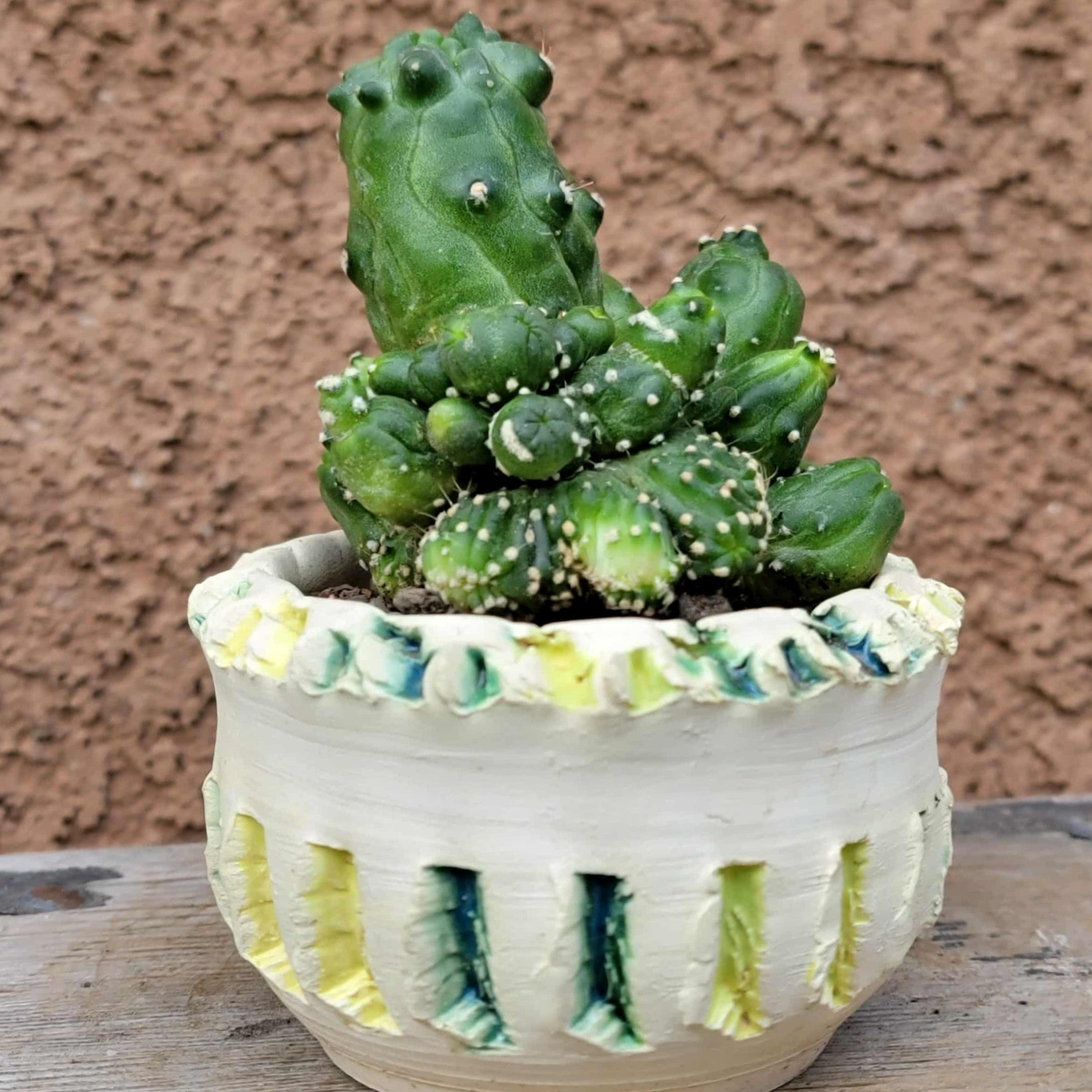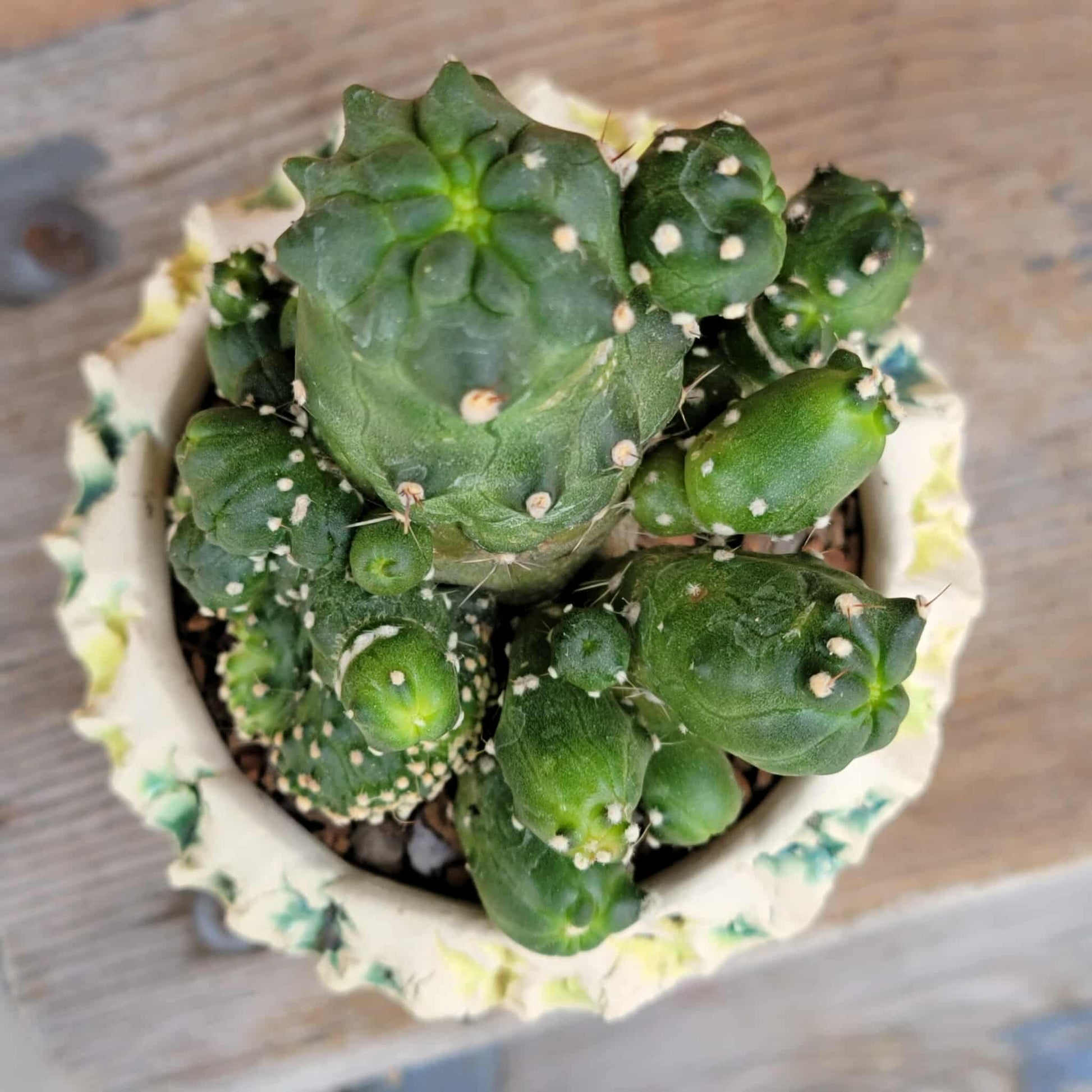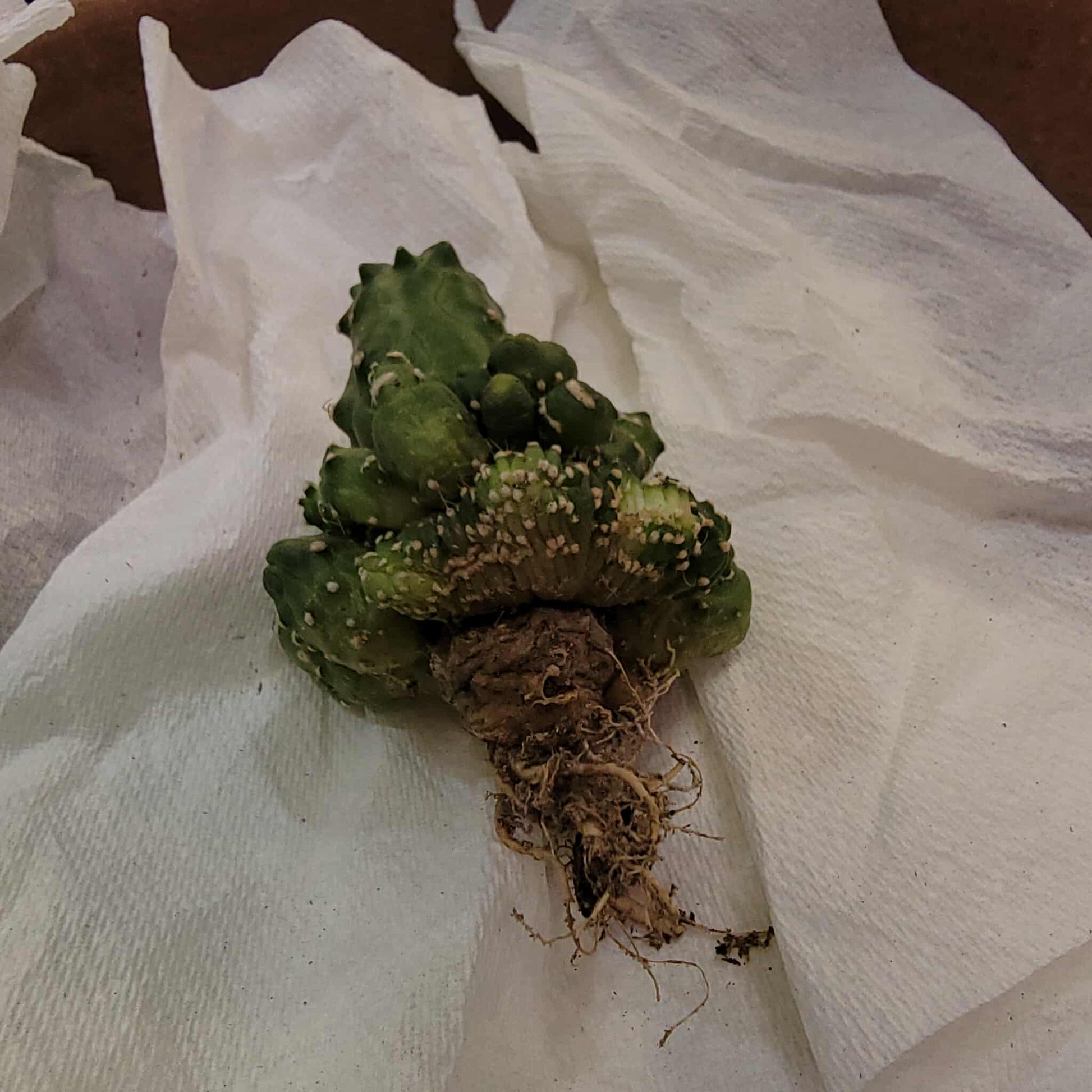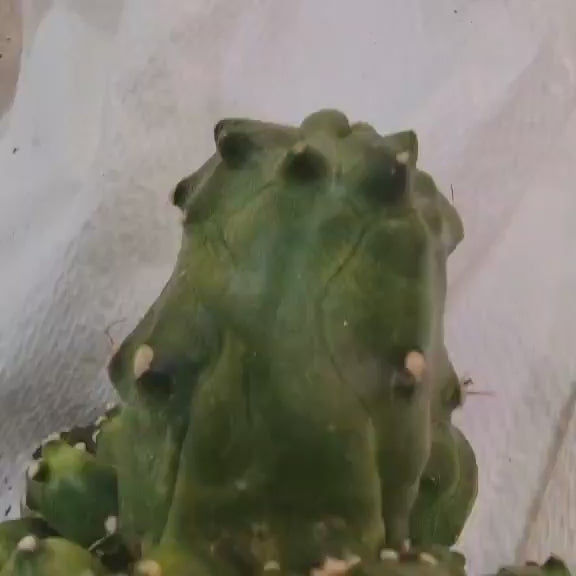Shangri-Ha Cactus Ranch
Echinopsis aurea subs. shaferi f. monstruosa
Echinopsis aurea subs. shaferi f. monstruosa
Couldn't load pickup availability
Echinopsis aurea subs. shaferi f. monstruosa
You will receive a specimen similar to the one shown here.
Measures approximately 3.5" tall x 3” wide.
Roots as shown.
Showcased here in one-of-a-kind handmade pottery (sold separately).
Will be shipped bare root.
Echinopsis aurea subs. shaferi f. monstruosa is a highly variable, monstrous, and nearly spineless cultivar of the shaferi subspecies of the cactus species Echinopsis aurea. Unlike the standard spiny form, this plant grows as a profuse cluster of irregularly shaped, ovoid stems.
Key Characteristics:
- Stems: Composed of upright, branching sections, the stems are bright to dull olive-green, taking on purple hues when exposed to full sun. They can grow up to 30 cm tall.
- Areoles and spines: The plant has very few areoles, which contain only short, white wool. The areoles are arranged irregularly and often fuse together to form unique horizontal lines that contrast with the stem. The few spines that are present are honey-colored to brown with darker tips.
- Flowers: Despite its "monstrous" appearance, the cactus produces impressive yellow flowers with unusually short, curled petals.
Care:
For the most part, the care for Echinopsis aurea subs. shaferi f. monstruosa is similar to that of other Echinopsis species.
- Light: This cactus thrives in intense, bright sunlight during its growing season, but can be scorched by the most intense afternoon sun. If growing indoors, place it in the brightest possible window.
- Water: Water thoroughly during the growing season (typically spring and summer), but only once the soil has completely dried out. During winter dormancy, reduce watering to once a month or stop entirely.
- Soil: Use a fast-draining cactus mix to ensure excellent drainage. This prevents the wet soil that can harm the plant.
- Fertilizer: Feed with a low-nitrogen cactus fertilizer during the growing season. You can suspend feeding entirely during the winter dormant period.
- Propagation: This cultivar can be propagated by carefully separating the offsets, or "pups," that grow around the base of the plant.
- Pests: Watch for common cactus pests like mealybugs and spider mites. These can be treated with a mixture of water and rubbing alcohol.
